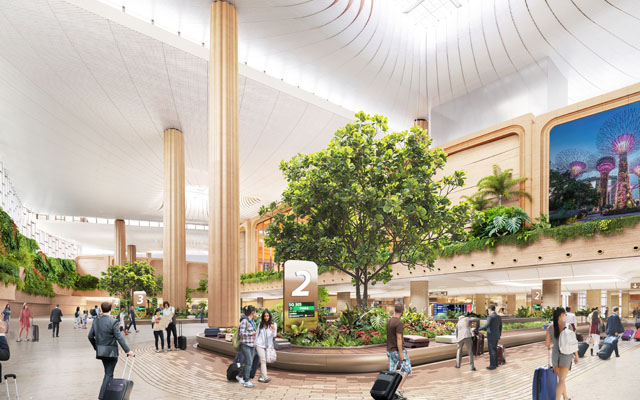Groundbreaking for Changi Airport’s Terminal 5 (T5) took place on May 14, marking the start of construction on the airport’s largest expansion to date. The ceremony was officiated by Singapore’s prime minister and minister for finance, Lawrence Wong.
T5 will be equipped with automated systems to improve operational efficiency and meet future travel demand. Once completed, it will be connected to the existing terminals at Changi Airport, enabling integrated operations. The first phase of T5 is scheduled to open in the mid-2030s and will be able to handle around 50 million passengers annually.

The terminal is being developed in response to expected growth in air travel, particularly in the Asia-Pacific region. It will also support the consolidation of the Singapore Airlines Group’s operations under one terminal, with space for other carriers to expand.
T5 will include a ground transport centre, which will integrate train, bus, taxi, and other transport services. Plans are underway to extend the Thomson-East Coast Line and Cross Island Line to the new terminal, improving access to and from the city and other parts of Singapore.
The terminal will also facilitate air-sea connectivity through improved links to ferry services for regional travel.
Automation will be used across both passenger-facing and operational areas. Technologies currently under trial will be scaled up by the time T5 begins operations, supporting efficiency and reducing reliance on manpower.
T5 will be built to energy-efficient standards, classified as a Green Mark Platinum Super Low Energy building. It will use renewable energy, including a large rooftop solar system, as well as a central building management system to monitor and control energy use.
The terminal design includes a series of curved roof structures of varying height to break up the building’s scale. The layout allows for natural light and includes indoor landscaping. Travellators and an automated people mover (APM) system will reduce walking distances. The APM will also connect T5 with Terminal 2 to facilitate transfers between terminals. Passenger flow will be supported by intuitive layout and wayfinding features.
The design work was paused in 2020 due to the Covid-19 pandemic and resumed in 2022. The terminal’s layout will allow it to be sectioned off to manage different passenger risk profiles if necessary, and will include features such as contactless touch points to support public health.
T5 is part of the larger 1,080-hectare Changi East development, which includes the Changi East Industrial Zone (CEIZ) and Changi East Urban District (CEUD). The CEIZ will support aircraft maintenance, logistics, and cargo operations, while the CEUD will provide commercial and business facilities near the terminal.
Yam Kum Weng, CEO, Changi Airport Group, said: “Our vision is for T5 to be mega yet cosy, a terminal that embraces the Changi DNA – delivering a personalised, stress free and positively surprising airport experience. As a new gateway to Singapore, T5 offers new possibilities and will bring new surprises.”











